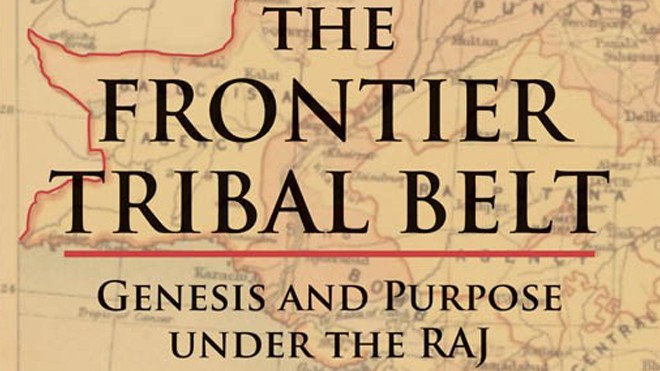
A new book argues that understanding the people of FATA is vital in order to incorporate the region with the rest of Pakistan

Recently, the government has been looking to improve the administrative affairs of the Tribal Belt that straddles the Pakistan-Afghanistan border. A few steps have been suggested to sync its administrative structure with that of the rest of the country.
Since the inception of Pakistan, the frontier region between Pakistan and Afghanistan has been riddled with issues. As the Afghan government had claims over territories on the Indian side during the Durand line demarcation, for decades it refused to recognise the state of Pakistan that emerged from the division of the Indian subcontinent. In the last few decades, many of the issues have remained as sticking points while newer ones have also emerged.
One issue the belt faces is the border dispute. While the Afghans propagate this problem, Pakistan considers it to be a settled issue and not a point of contention. Another issue is that the area has been marred by a lack of development. With almost no infrastructure the society is, at best, medieval in character. Some perceive this as the reason that the tribes and people living there have maintained their independence. In the absence of proper state institutions each able-bodied male is his own protector. The sight of armed men is a symbol of people who take great pride in their independence. The desire for order is seen as a limitation of this freedom and to live under the rule of law means compromising that fierce sense of independence.
In fact, Pakistan has made no substantial effort to change the administrative structure of the Tribal Belt. The region has always been regarded as a border zone and the policies imposed on it have been driven by the same motivation. Historically, it was the border of an empire facing another empire, and because of its structure more than the mindset, the same attitude has prevailed through time, even though the conditions may have drastically changed.
But within the modern context can this be so? In order to solve the very complex issue of this area it is important to adopt a comprehensive approach and understanding of the people and its history. This way we can avoid imposing an order that would be rammed down the throats of people in the Tribal Belt in the pretence of bringing the agencies at par with the modern contingencies.
In the recent past, many books that appear to be more sympathetic to the issue and avoid an outsider’s point of view have been published. The book under review is also by a local scholar who belongs to the area and has both an academic understanding of the issue and a heart that beats in tandem with local traditions, values and residents. He is, at least academically, in a better position to offer a way forward on the issue.
Salman Bangash, the author, has studiously gone through the history of the area and its administrative and political positioning as it has evolved with the various policies of under different governments. It is a good attempt at understanding the complexity of the situation and a reminder that quick-fix solutions clamped from above for the sake of political expediency and media headlines are no good.
The British treated this area as a buffer within a buffer during the Great Game of the 19th Century. After the Czarist Empire annexed or conquered various Central Asian Khanates in the mid-19th century, they followed a policy of wilful neglect on the pretext that it guaranteed them freedom, independence and non-interference. This was done to convey to the tribesmen that the British had no desire to interfere in their day-to-day or their socio-economic and cultural dynamics.
In 1877 Lord Lytton devised a system whereby the central government had direct control of the administration and Frontier Policy. A system of political agencies was developed in the Tribal Belt; this supplanted an administrative structure of district administration in which political agents were the main government functionaries and they were answerable only to the officer representing the federation. This office made alliances and developed a working relationship with the local maliks. It controlled them or bought their loyalties by authorised payment of allowances "muwajjab" (cash and other benefits).
This system continued three decades after the creation of Pakistan but was disrupted and replaced by another system, or a lack of system, after the Russian invasion of Afghanistan. When Pakistan decided to take part in the war against the occupation, the Tribal Belt was used to house refugees and train fighters to wage jihad across the border. Since ideology played an important role in this "holy war" mullahs and other religious personalities gained great prominence and assumed a critical mass in the region. They amassed more cash and armaments than the political agent and his coteries of maliks.
The Russian invasion disrupted the entire system. Meanwhile the government of Pakistan continued to treat the belt as a frontier region which the British had conceived to stop and checkmate the Czarist advance and influence. The Pakistani state did not reset the priorities of the belt and resultantly their attitude has remained the same even though ground realities have completely changed.
The Tribal Belt should be treated like the rest of the country rather than as a frontier and then subsequent steps should be taken to integrate it to the rest of the Khyber Pakhtunkhwa. The settlement, if any, between FATA’s administration and the state of Pakistan should also be considered because the conditions under which the tribes decide to be part of Khyber Pakhtunkhwa should be publicaly known.